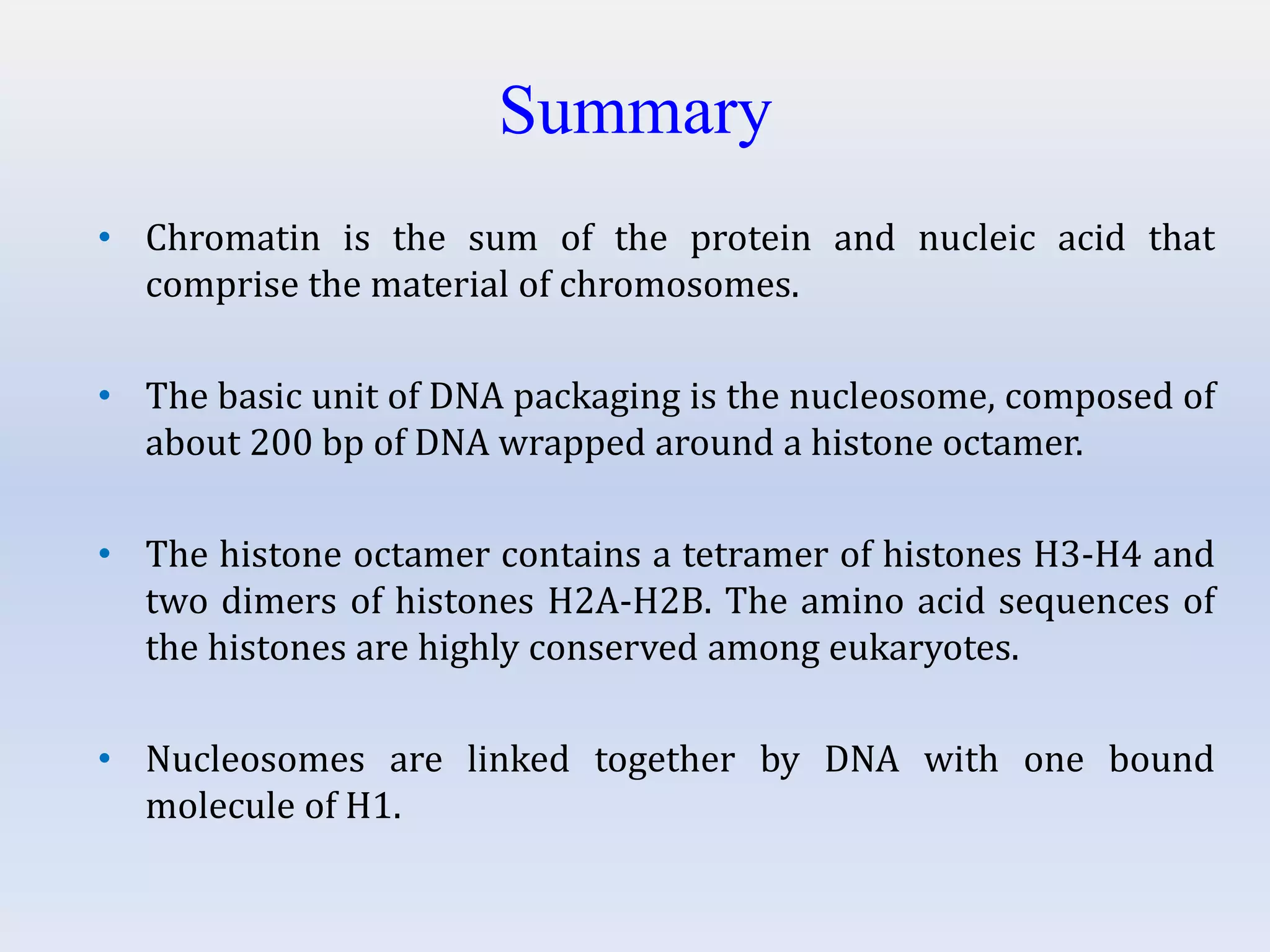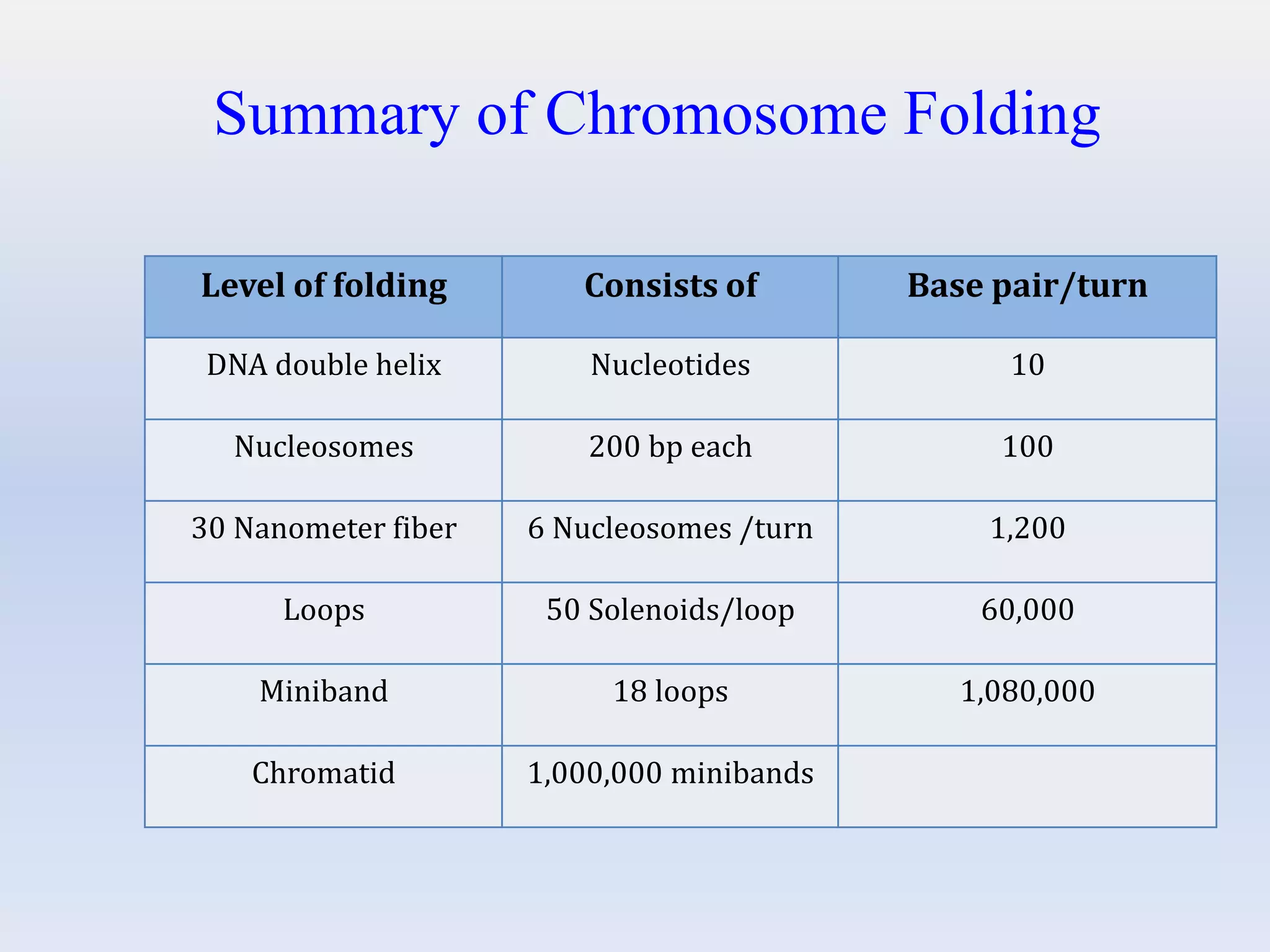The document discusses DNA packaging in eukaryotic cells. It describes how DNA is wrapped around histone proteins to form nucleosomes, which are regularly spaced beads on a string of chromatin. Nucleosomes further condense into a 30nm fiber through interactions between nucleosomes. Higher-order folding involves loops of fiber and coiling to achieve the extreme compaction needed to fit a cell's full genome inside the nucleus.
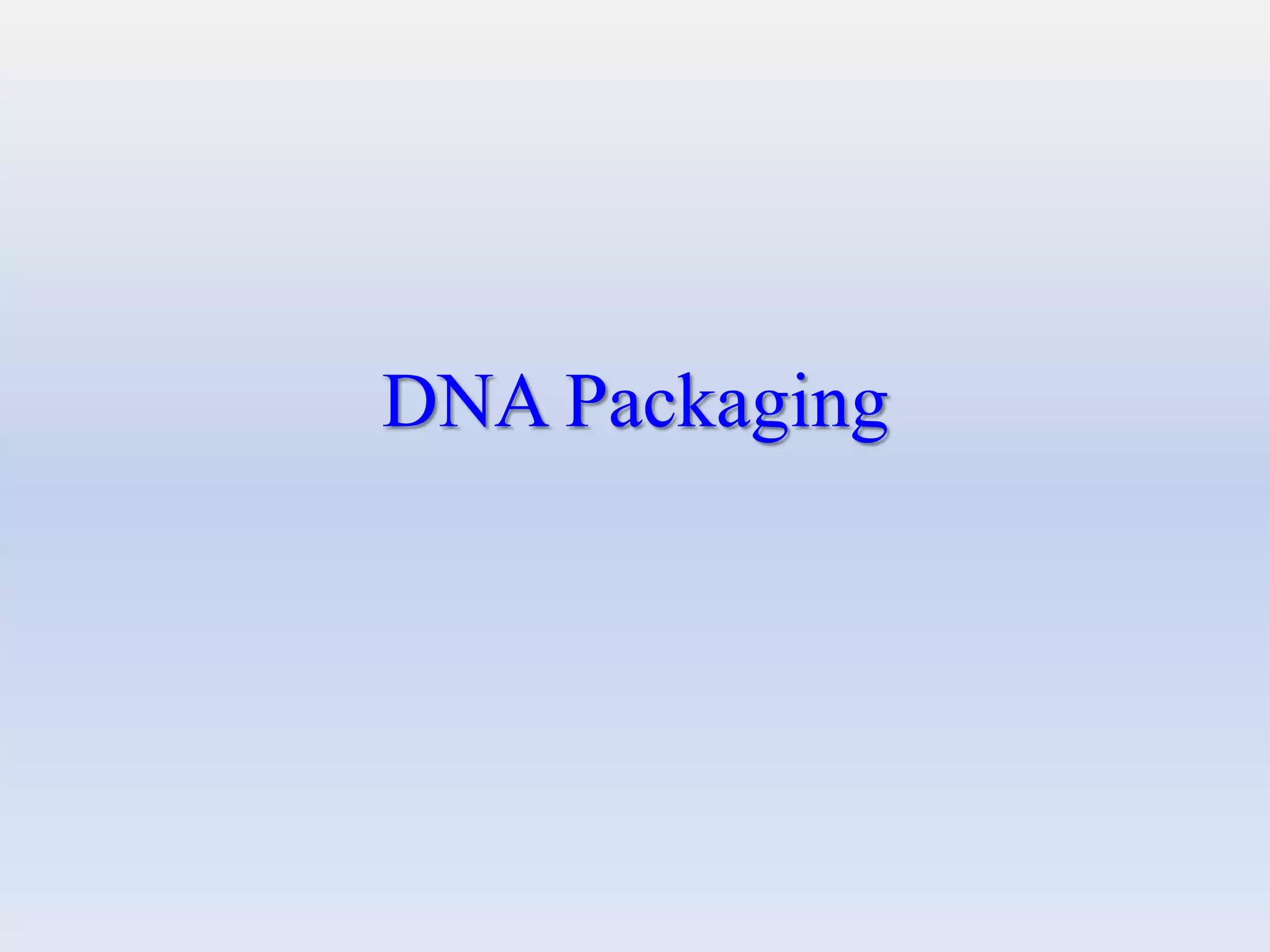
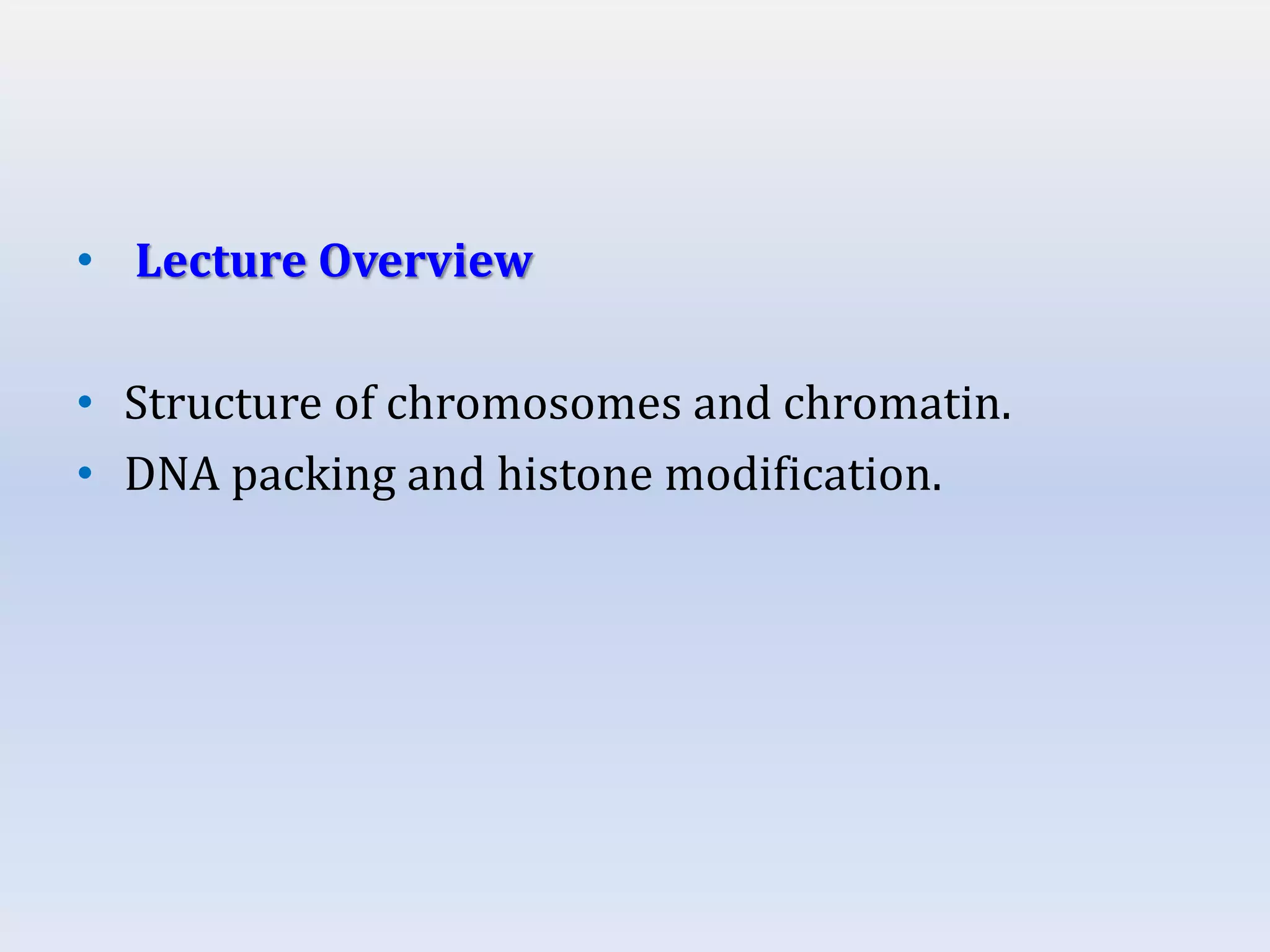

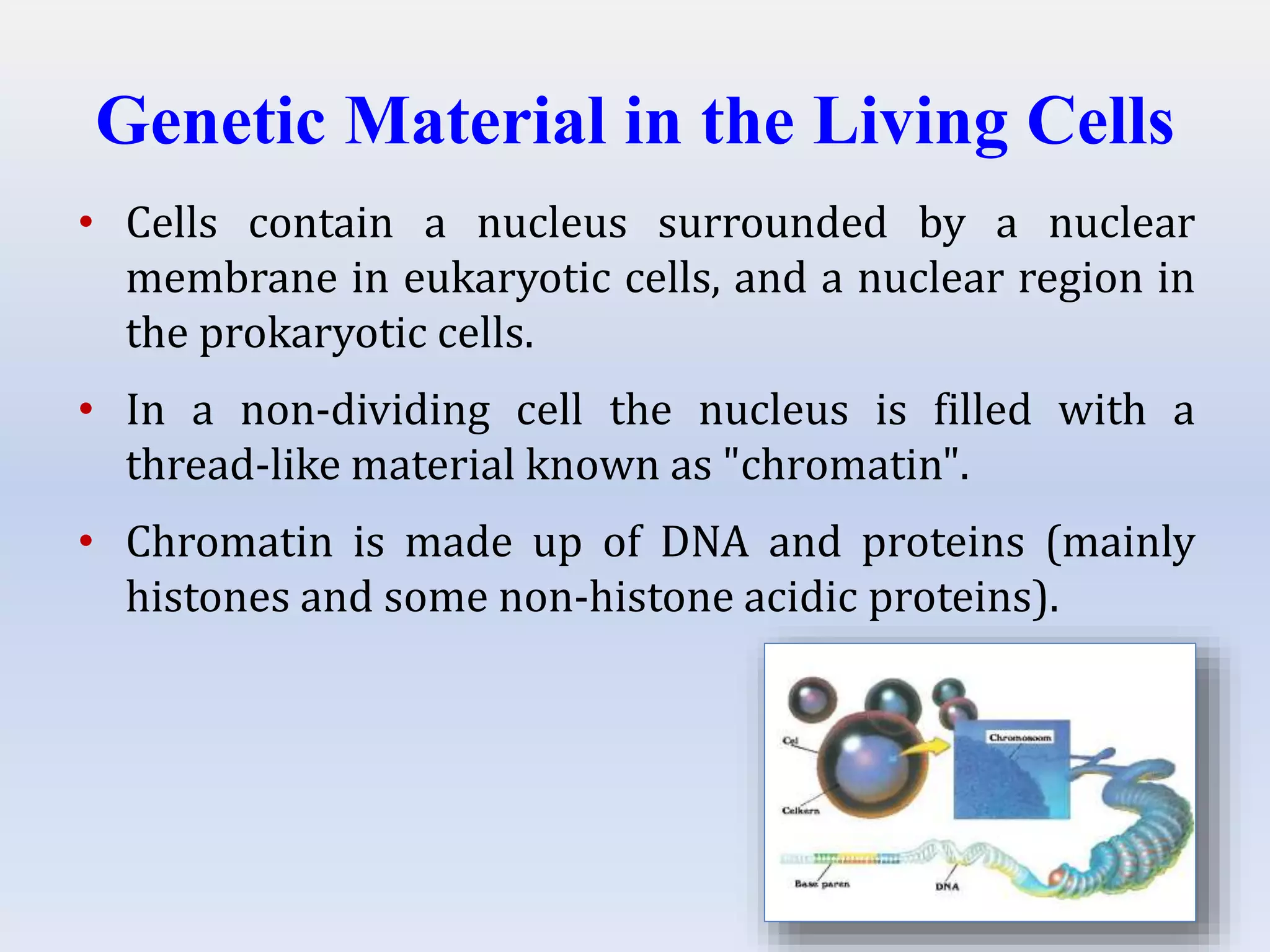
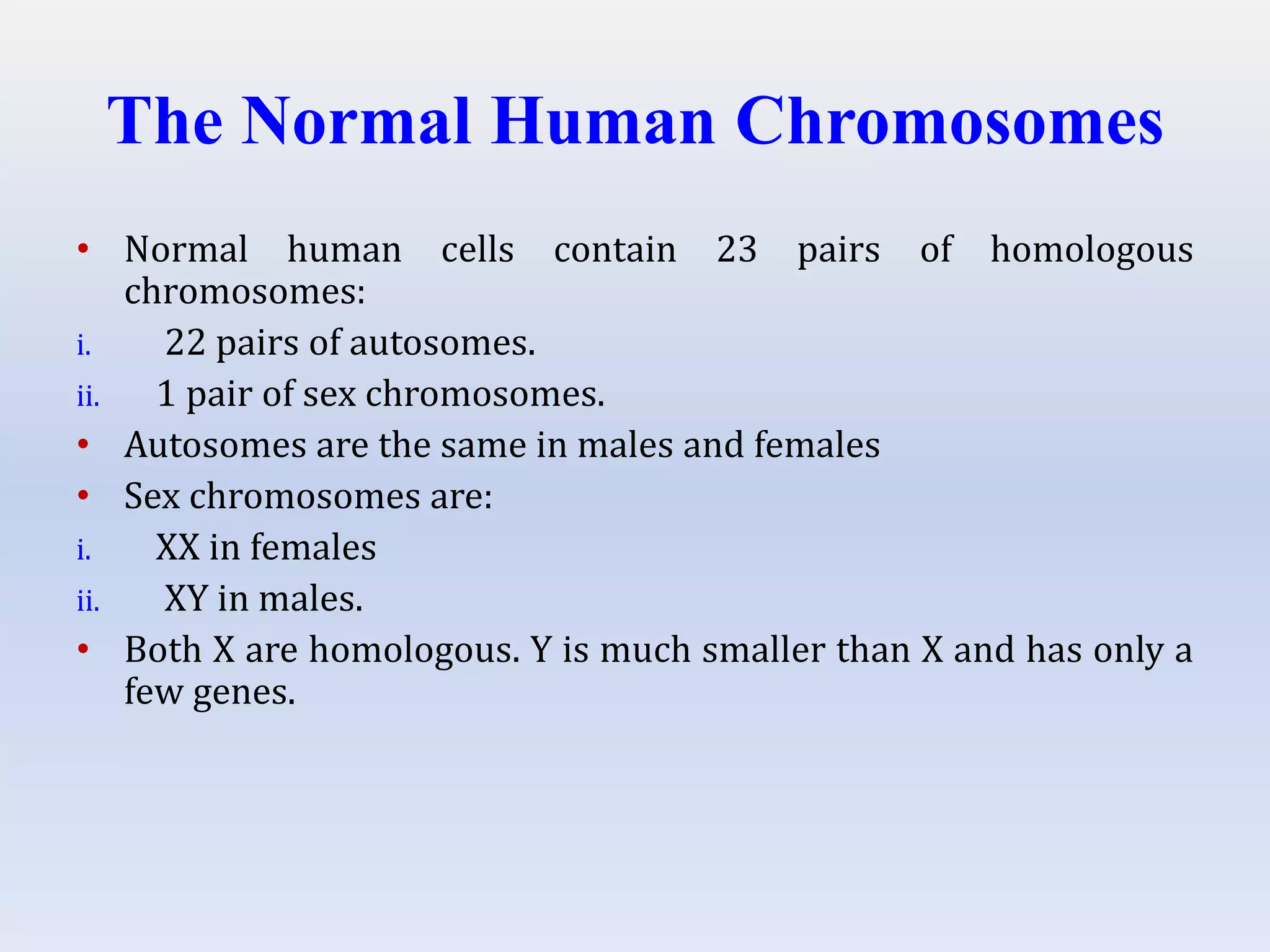

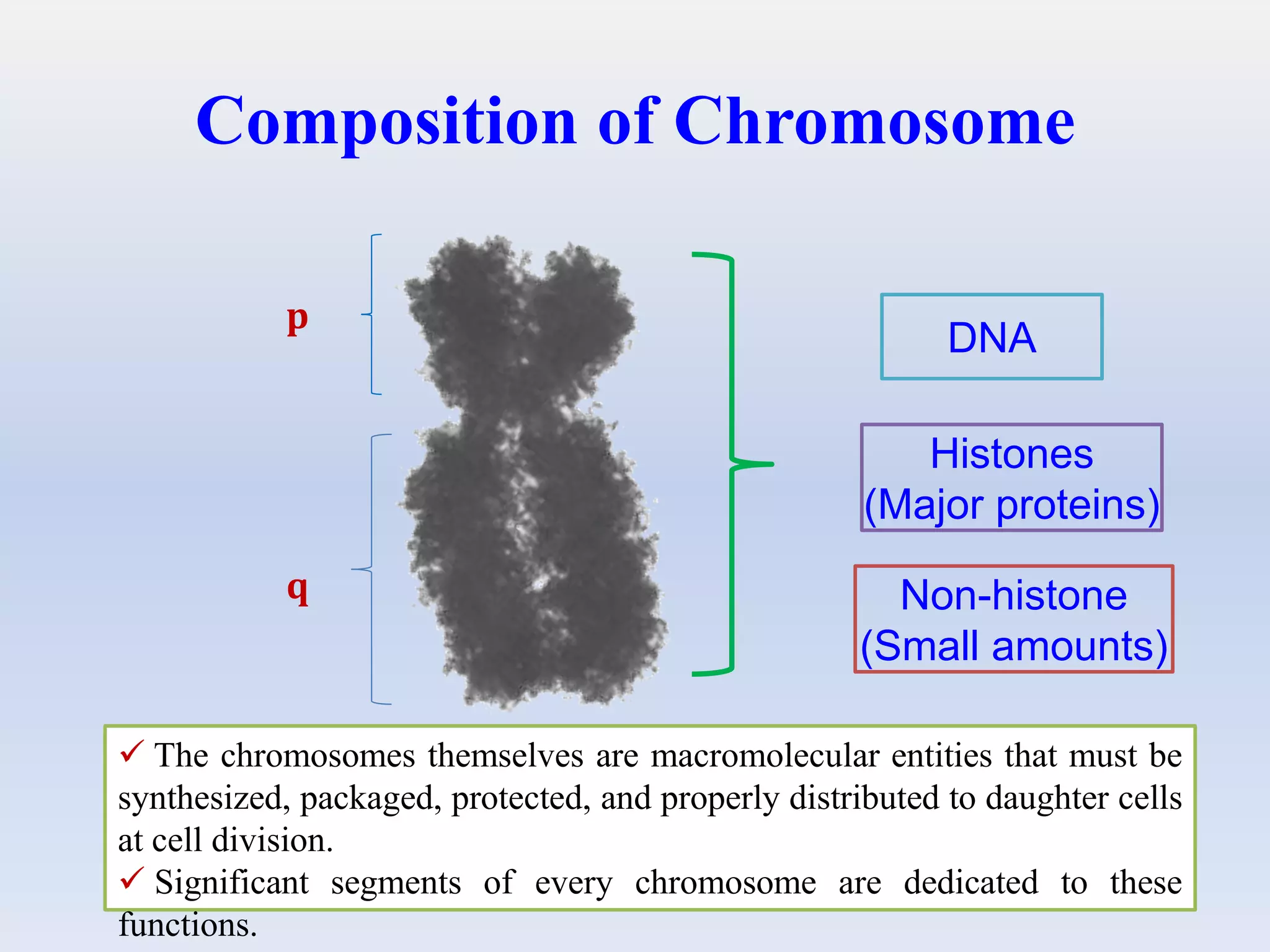

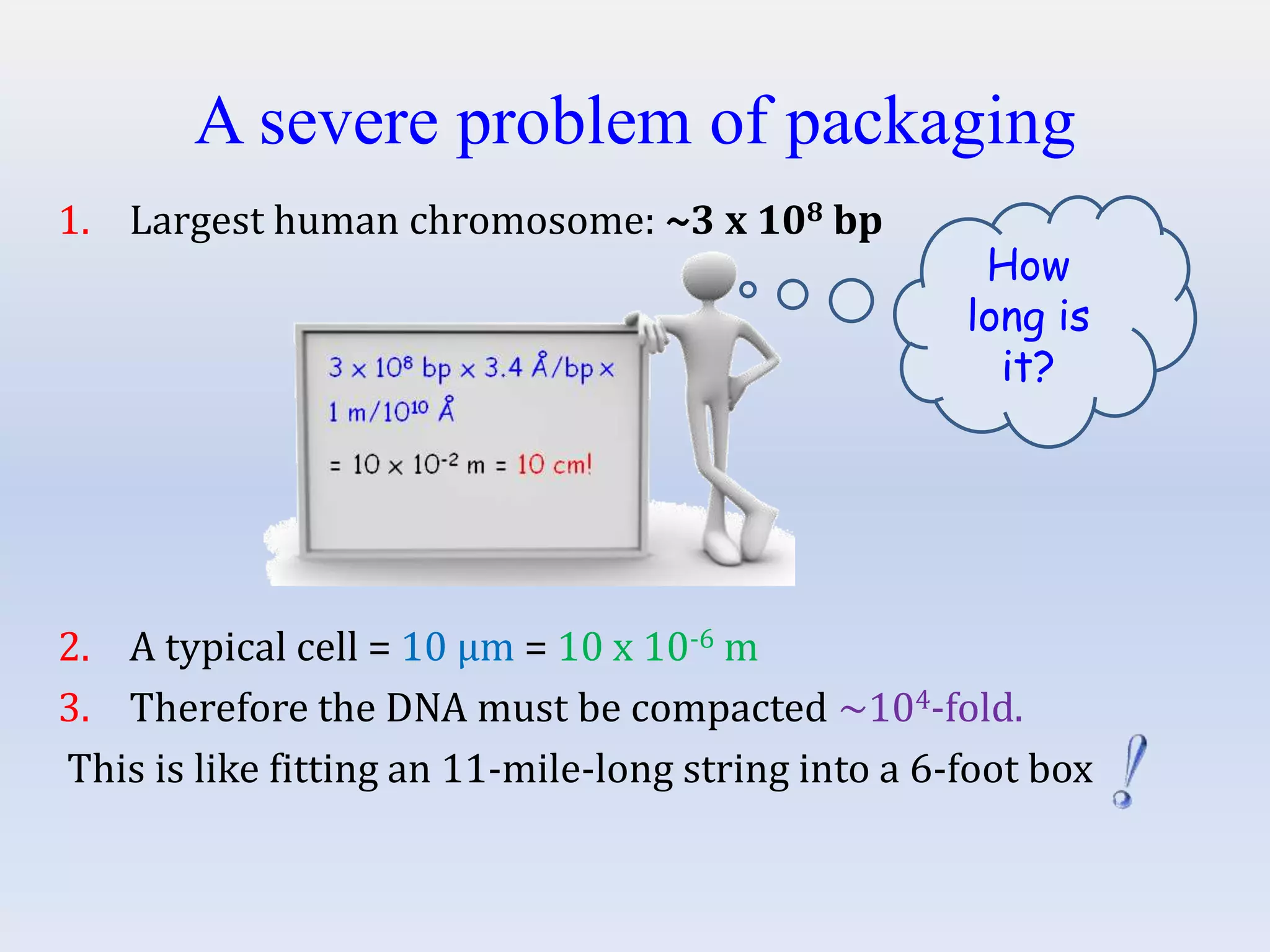
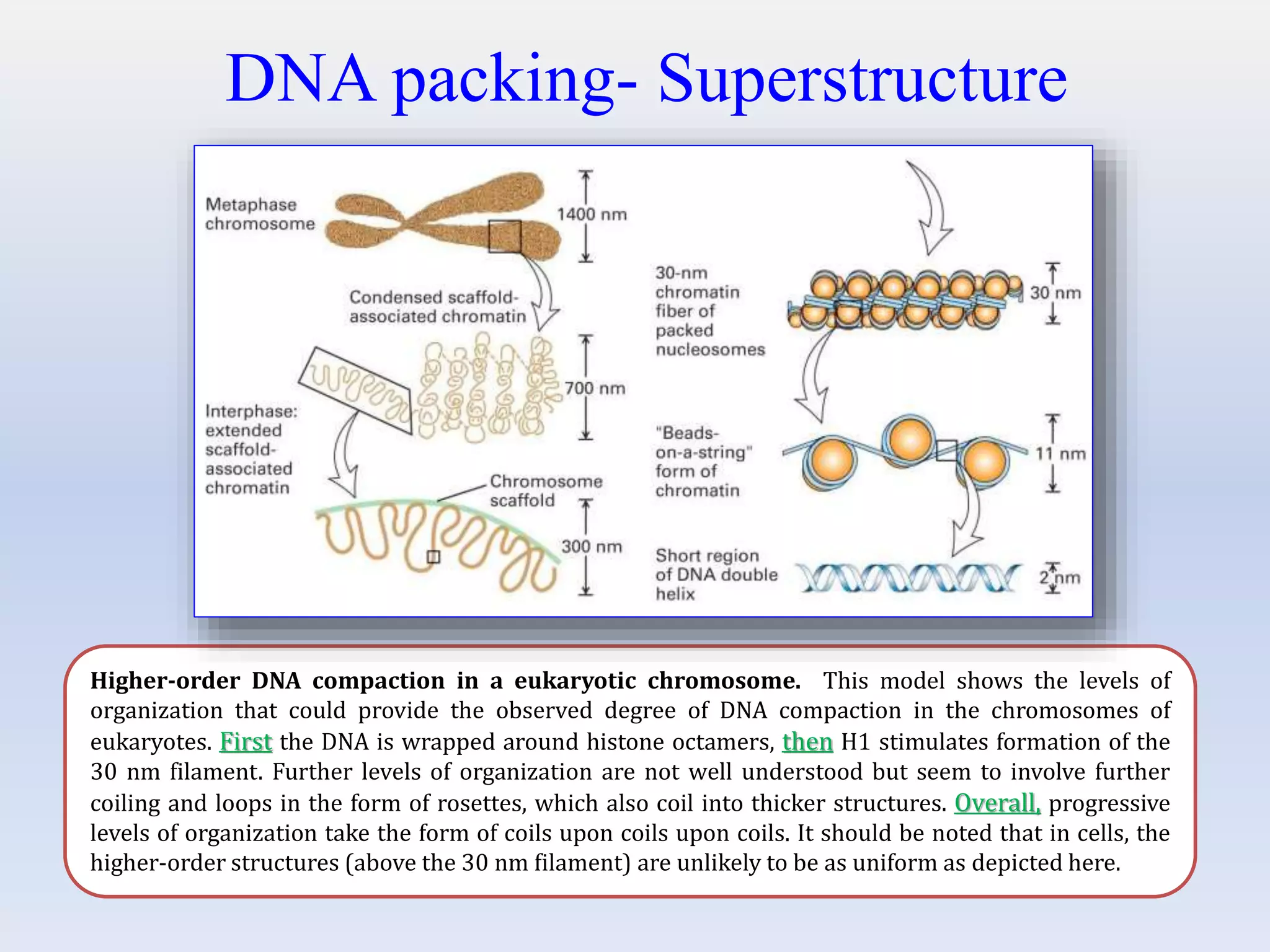






![The earliest evidence of DNA packaging.
Isolated chromatin was treated with nuclease and analyzed by agarose gel
electrophoresis.
The result was a DNA ladder of fragments that differed in length by 200 bp,
suggesting that DNA packaging involves a repeat unit of 200 bp.
[Source: Roger Kornberg, MRC Laboratory of Molecular Biology.]](https://image.slidesharecdn.com/dnapackaging-230621141048-dc1cc293/75/DNA_Packaging-ppt-17-2048.jpg)
![Histone representation in nucleosomes.
Histones within nucleosomes were separated by SDS–polyacrylamide gel
electrophoresis.
Measurement of the band intensity showed histones H2A, H2B, H3, and H4 present
in equal stoichiometry, and histone H1 at about half the level of the other histones.
[Source: S. Panyim and R. Chalkley, Archiv. Biochem. Biophys. 130:337–346, 1969.]
Histones- main packing proteins.
• Consist of 5 classes: H1, H2A, H2B, H3, H4.
• When the protein-DNA units (nucleosomes) were
examined by SDS−polyacrylamide gel electrophoresis
(SDS-PAGE), four histone proteins (H2A, H2B, H3, and
H4) were found in approximately equimolar ratios .
• A fifth histone (H1) was present in about half the amount
relative to the other four histones. H1 is Lys rich.
• The five histones have molecular weights (Mr) between
11,000 and 21,000.](https://image.slidesharecdn.com/dnapackaging-230621141048-dc1cc293/75/DNA_Packaging-ppt-18-2048.jpg)





![The 30 nm filament, a higher-order organization of nucleosomes.
The compact filament is formed by the tight packing of nucleosomes. Two proposed
models of filament structure are (A) the solenoid model and (B) the zigzag model.
[Source: (a) Barbara Hamkalo, Department of Molecular Biology and Biochemistry University of California, Irvine.]](https://image.slidesharecdn.com/dnapackaging-230621141048-dc1cc293/75/DNA_Packaging-ppt-24-2048.jpg)

